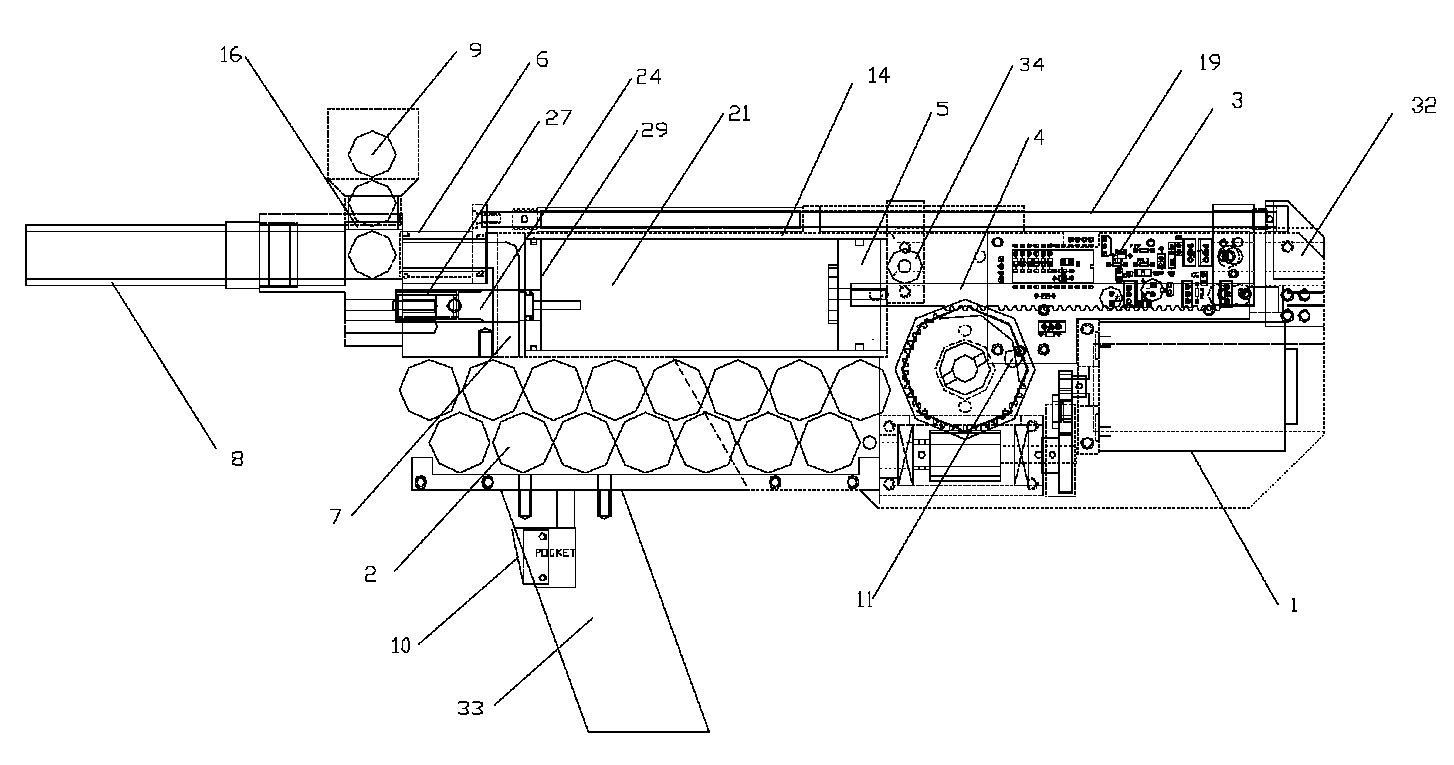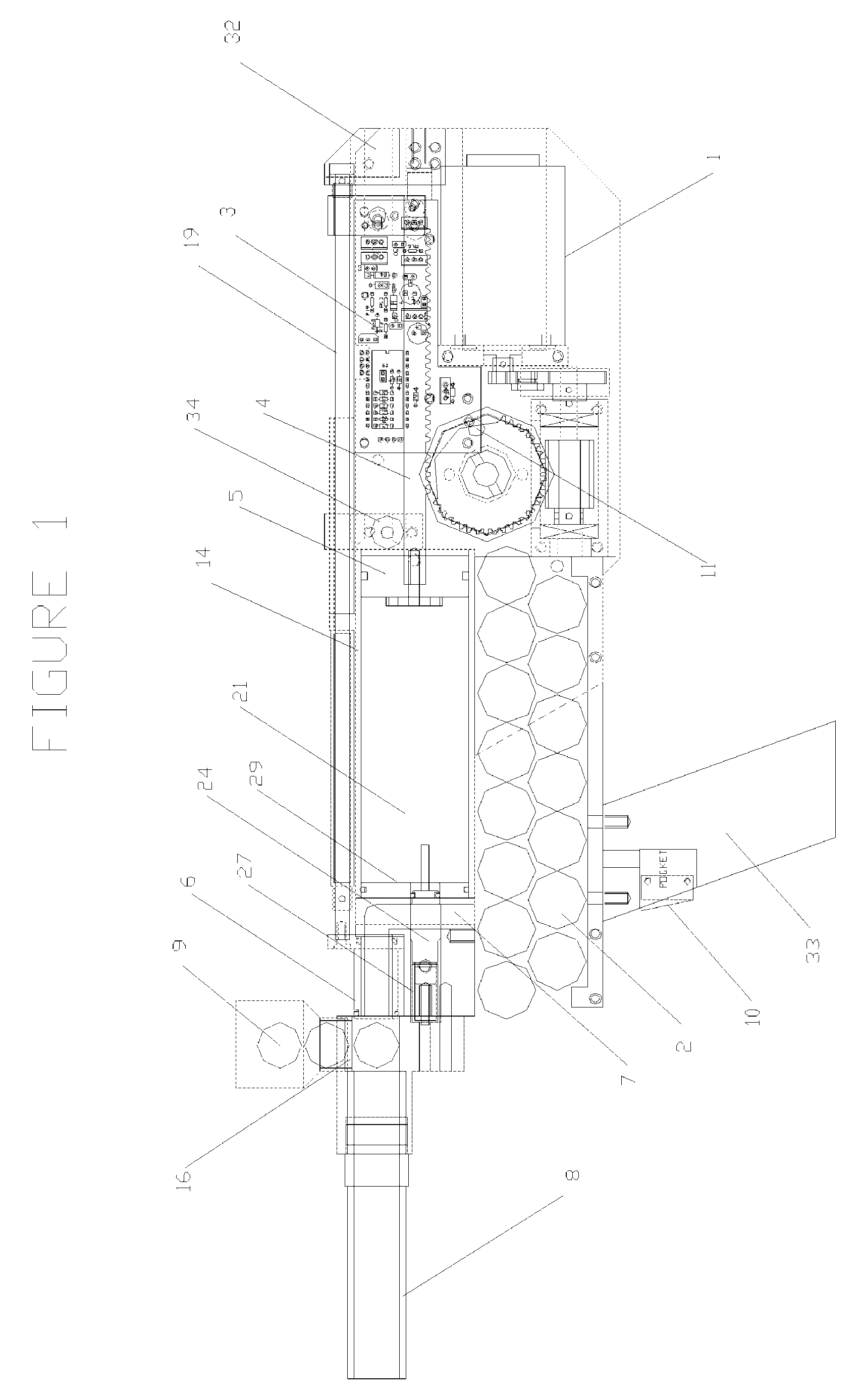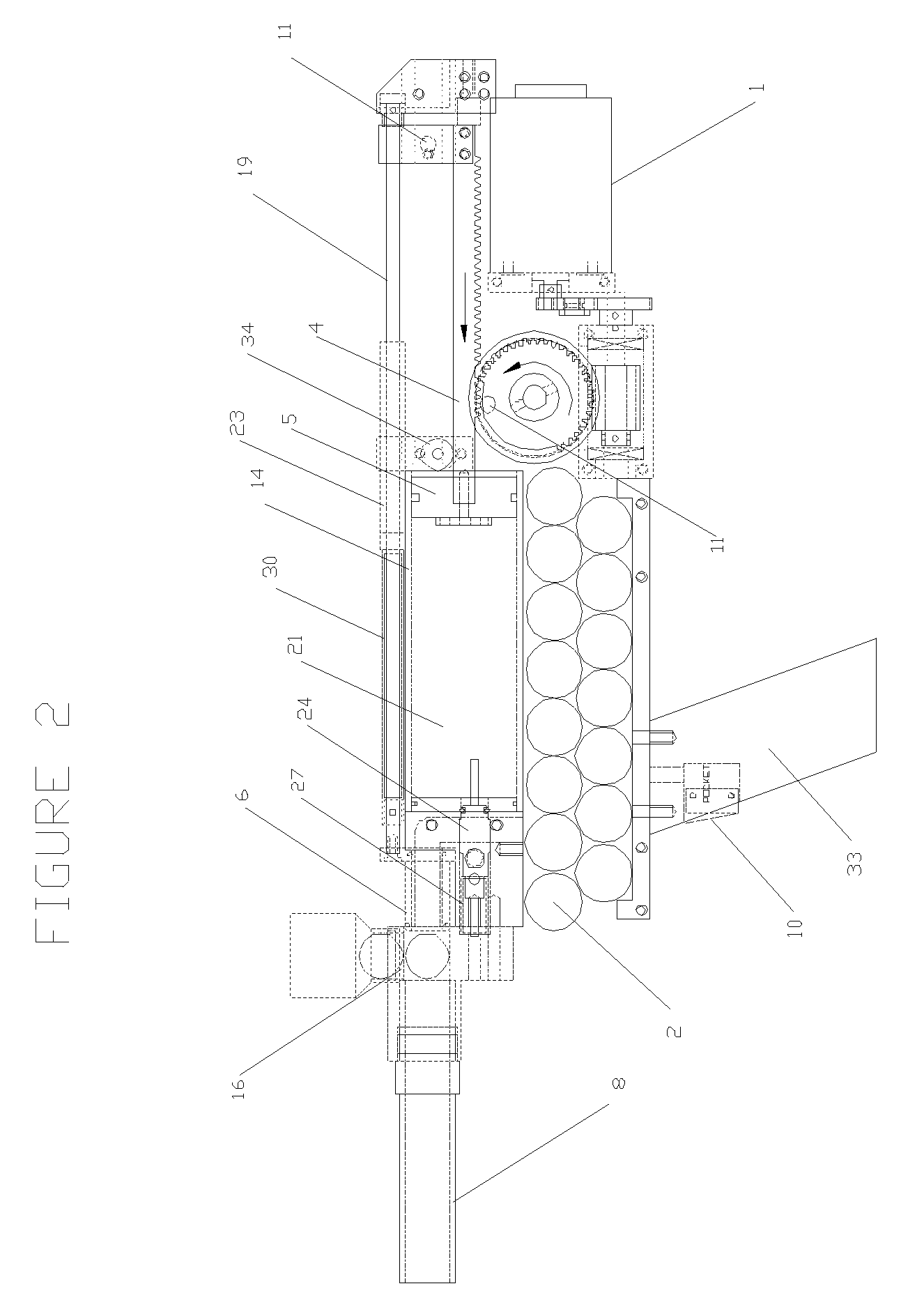Filling, transporting and using such a canister represents an inconvenience and potential safety
hazard for the user.
This
peripheral equipment increases the cost and complexity of such an air gun.
Furthermore, these tanks store a large amount of energy which, can be suddenly released through a tank fault, creating a potential safety issue.
All of these patents still suffer from the major inconvenience and potential safety
hazard of storing a large volume of highly compressed gas within the air gun.
Additionally, as they combine electronic control with the propulsion method of stored compressed gas, the inherent complexity of the mechanism increases, thus, increasing cost and reliability issues.
This addresses the ability of
multiple modes of fire, but does not solve the fundamental propulsion issues of safety and inconvenience associated with gas cylinders.
Problems with this method include the need to “cock” the spring between shots thus limiting its use to
single shot devices and low rates of fire.
Furthermore, the unwinding of the spring results in a double
recoil effect.
Additionally, spring air rifles require a significant amount of maintenance and, if dry-fired, the mechanism is easily damaged.
Finally, the effort required for such “cocking” is often substantial and can be difficult for many individuals.
While this innovation solves the problem of cocking effort, the resulting air
rifle still suffers from a complicated mechanism, double
recoil and maintenance issues associated with the spring piston
system.
This implementation still suffers from similar limitations inherent in the spring piston systems.
Springs in such systems are highly stressed
mechanical elements that are prone to breakage and which increase the weight of the air gun.
A further
disadvantage of Hu's teaching is that the spring is released from the rack
pinion under full load causing the tips of the gear teeth to undergo severe tip loading.
This causes
high stress and wear on the mechanism especially the gear teeth.
This is the major complaint for those guns in the commercial market and is a major reliability issue with this style mechanism.
A further
disadvantage of this type of mechanism is that upon scale up to accept larger projectiles or
projectile with more energy, there occurs much increased wear and a forward
recoil which is the result of the piston impacting the front end of the cylinder.
In a dry fire (no projectile), the mechanism can be damaged as the piston slams against the face of the cylinder.
Thus, forward recoil, high wear and low power are drawbacks in these types of mechanisms.
In this case, the device is for non-portable operation.
The third technique, using a
hand pump to pressurize the air, is often used on low end devices and suffers from the need to pump the air gun between 2 to 10 times to build up enough air supply for sufficient projectile velocity.
This again limits the air
rifle or paintball gun to slow rates of fire.
While this solves the obvious problem of manually pumping a chamber up in order to fire a gun, these devices suffer from the inability to store sufficient energy in the air
stream.
Solenoids are inefficient devices and can only convert very limited amounts of energy due to their operation.
This limits the ability of the solenoid to store energy in the air
stream to a very short time period and further relegates its use to low energy air rifles.
This results in a very energetic piston
mass similar to that shown in spring piston designs and further results in the undesirable double recoil effect as the piston
mass must come to a halt.
Additionally, this technique suffers from dry-fire in that the air is compressed between the piston and the projectile.
A missing projectile allows the air to communicate to the
atmosphere through the
barrel and can damage the mechanism in a dry-fire
scenario.
Although this solves the issue of sufficient power, it is no longer considered an air
rifle as it becomes a
combustion driven gun.
Moreover, it suffers from the aforementioned disadvantages including complexity and difficulty in controlling the firing sequence.
Although this solves the issue of double recoil, it is not suitable to a portable
system due to inefficiencies of compressing air and the large tank volume required.
Using air in this fashion is inefficient and not suitable for portable operation since much of the
air compression energy is lost to the environment thru the air tank via cooling.
Furthermore, additional complexity and expense is required to regulate the air pressure from the tank so that the projectile velocity is repeatably controlled.
Again, due to the large volume of air between the compression means and the projectile, much of the heat of compression is lost leading to inefficient operation.
Additionally, this patent teaches of a continuously operating device which suffers from a significant
lock time (time between trigger pull and projectile leaving the
barrel) as well as the inability to run in a semiautomatic or
single shot mode.
Further disadvantages of this device include the pulsating characteristics of the air stream which are caused by the release and reseating of the
check valve during normal operation.
Limitations of this approach include difficulty in achieving high projectile velocity since the transfer of energy must be done extremely rapidly between the impacting hammer and the projectile.
Further limitations include the need to absorb a significant
impact as the solenoid
plunger must stop and return for the next projectile.
Since the solenoid
plunger represents a significant fraction of the moving
mass (i.e. it often exceeds the projectile weight), this type of
system is very inefficient and limited to low velocity, low energy air guns as may be found in toys and the like.
The spring is “cocked” via an
electric motor, but again, this does not overcome the prior mentioned limitations.
All of the currently available devices suffer from one or more of the following disadvantages:1. Manual operation by cocking a spring or pumping up an
air chamber.2. Difficult to selectively perform single fire, semiautomatic, burst or automatic
modes.3. Inconvenience, safety and consistency issues associated with refilling, transport and use of high-pressure gas or
carbon dioxide cylinders.4. Non-portability and low efficiency.
Carnival air rifles and the like are tethered to a
compressed air supply powered by a compressor which loses a significant portion of the energy of compression to heat loss from the air tank thus making battery operation impractical.5. Forward recoil effects, high wear, and dry fire damage associated with spring piston and electrically actuated spring piston designs.6. Complicated mechanisms associated with electrically winding and releasing a spring piston design resulting in expensive mechanisms with reliability issues.7. Inefficient use and / or
coupling of the compressed air to the projectile resulting in low energy projectiles and large energy input requirements.
 Login to View More
Login to View More  Login to View More
Login to View More 


